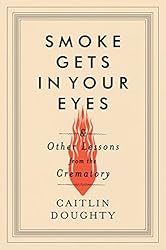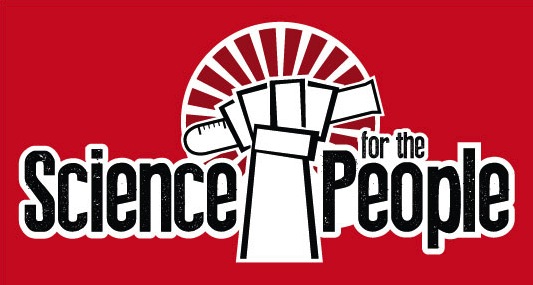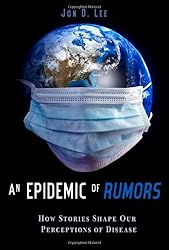 This week, we’re talking about disease prevention, public health, and whether or not some types of vaccinations should be mandatory. We’ll spend the hour in a panel discussion with Barry Bloom, Harvard University’s Distinguished Service Professor of the Department of Immunology and Infectious Diseases, University of Toronto public health ethicist Alison Thompson, pediatrician and University of Pennsylvania vaccinology professor Paul Offit, and Nicholas Little, Vice President and General Counsel at the Center for Inquiry.
This week, we’re talking about disease prevention, public health, and whether or not some types of vaccinations should be mandatory. We’ll spend the hour in a panel discussion with Barry Bloom, Harvard University’s Distinguished Service Professor of the Department of Immunology and Infectious Diseases, University of Toronto public health ethicist Alison Thompson, pediatrician and University of Pennsylvania vaccinology professor Paul Offit, and Nicholas Little, Vice President and General Counsel at the Center for Inquiry.
Tag: Disease
Science for the People: Bodies Everywhere
 This week, Science for the People is looking at the morbid and fascinating history of our attempts to grapple with disease and death. We’re joined by medical historian Richard Barnett to talk about his book The Sick Rose: Disease and the Art of Medical Illustration.
This week, Science for the People is looking at the morbid and fascinating history of our attempts to grapple with disease and death. We’re joined by medical historian Richard Barnett to talk about his book The Sick Rose: Disease and the Art of Medical Illustration.
 And we’ll speak to mortician and blogger Caitlin Doughty about her new book Smoke Gets In Your Eyes: And Other Lessons from the Crematory, and her ongoing YouTube series “Ask a Mortician“, about the history, science and cultural attitudes attached to dealing with the deceased.
And we’ll speak to mortician and blogger Caitlin Doughty about her new book Smoke Gets In Your Eyes: And Other Lessons from the Crematory, and her ongoing YouTube series “Ask a Mortician“, about the history, science and cultural attitudes attached to dealing with the deceased.
*Josh provides research help to Science for the People and is, therefore, completely biased.
Doctors Without Borders: Don’t wait for Ebola magic bullets
Earlier this week I argued that hand-wringing over the lack of Ebola vaccines and drugs is misguided. We have effective tools to fight Ebola right now.
This week in the New England Journal of Medicine, physicians from WHO and Médecins sans Frontières make a similar argument much more eloquently:
There has recently been immense media, public, and medical attention to specific treatments for Ebola virus infection. Although these experimental interventions represent important potential treatments, they also reflect our seemingly innate focus on developing magic bullets. It seems that focusing on reducing mortality in the existing “control group” by applying the current standard of care is less interesting, even if much more likely to be effective. Though we recognize the potential incremental value of new antiviral options, we believe that EVD requires a greater focus on available basic care…
Public health interventions including characterizing the outbreak epidemiology, contact tracing, social mobilization, and public education are essential steps in stopping Ebola and will ultimately save many more lives than can be saved by individual patient care…
Excellent clinical care and improved outcomes will result in improved community compliance, will help to break transmission chains, and will lead to a greater willingness of health care workers to engage in care delivery. To quote William Osler, “The best preparation for tomorrow is to do today’s work superbly well.”
Science for The People: An Epidemic of Rumors

 This week, Science for The People looks at the power of stories and innuendo to shape the public perception of science. They speak to author Jon Lee about his book An Epidemic of Rumors: How Stories Shape Our Perceptions of Disease. And they’re joined by Dr. Paul A. Offit, Chief of the Division of Infectious Diseases and the Director of the Vaccine Education Center at the Children’s Hospital of Philadelphia, to get the scientific perspective of the safety and effectiveness of vaccinations.
This week, Science for The People looks at the power of stories and innuendo to shape the public perception of science. They speak to author Jon Lee about his book An Epidemic of Rumors: How Stories Shape Our Perceptions of Disease. And they’re joined by Dr. Paul A. Offit, Chief of the Division of Infectious Diseases and the Director of the Vaccine Education Center at the Children’s Hospital of Philadelphia, to get the scientific perspective of the safety and effectiveness of vaccinations.
Coming to news stands. . .

Needless to say (but I’m going to anyway), I am pleased as punch that my lab’s most recent offering unto the body of scientific literature (“Analysis of alternative splicing associated with aging and neurodegeneration in the human brain”) was put on the cover of the current issue of Genome Research. In this paper, we investigated the connections between alternative splicing profiles in the aging brain and in brains suffering from neurodegenerative disorders, like Alzheimer’s disease. It is important to note that we were characterizing the alternative splicing differences associated with aging and disease, not identifying splicing changes that cause the diseases or the symptoms. Such questions will require ongoing work, which this study will, hopefully, help guide. Continue reading “Coming to news stands. . .”

